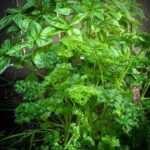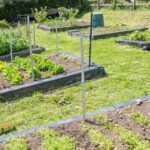Egg shells are not only good for making delicious omelets, but they also have incredible benefits for vegetable gardens. For many gardeners, egg shells are a valuable resource that can be used to enrich soil, ward off pests, and promote healthy plant growth. Understanding the potential of using egg shells in your vegetable garden can lead to more bountiful harvests and thriving plants.
In this article, we will delve into the various ways in which egg shells can benefit vegetable gardens. From their nutrient content to their ability to improve soil structure, egg shells have a lot to offer when it comes to promoting optimal growing conditions for vegetables. We’ll explore the step-by-step process of preparing egg shells for use in the garden, as well as practical application tips for achieving the best results.
Whether you’re a seasoned gardener or just starting out, learning about the advantages of incorporating egg shells into your gardening practices can be a game-changer. Join us as we uncover the secrets of using egg shells in vegetable gardens and discover how they can contribute to a thriving and productive growing space.
Nutrient Content
Egg shells are not only good for your vegetable garden, but they are also a great source of essential nutrients that can benefit the soil and promote healthy plant growth. Here’s a closer look at the nutrient content found in egg shells and how they can be beneficial in your garden:
- Calcium: Egg shells are primarily composed of calcium carbonate, which is a key nutrient for plant cell wall structure and strength. Calcium also helps to prevent blossom end rot in tomatoes, peppers, and eggplants.
- Magnesium: Another important mineral found in egg shells is magnesium, which plays a crucial role in chlorophyll production and overall plant health. A deficiency in magnesium can lead to yellowing of leaves and poor fruit development.
- Phosphorus: Egg shells contain small amounts of phosphorus, an essential nutrient for root development and flower/fruit formation. It also aids in energy transfer within the plant.
To maximize the benefits of these nutrient-rich egg shells in your vegetable garden, it’s important to properly prepare them for use. Here’s a step-by-step guide on how to crush and prepare egg shells:
- Collect empty eggshells and rinse them thoroughly to remove any residue.
- Air dry the eggshells completely before crushing them into small pieces using a mortar and pestle or a coffee grinder.
- Sprinkle the crushed eggshells directly onto the soil around your vegetable plants or mix them into the compost pile for added nutrients.
In addition to providing essential nutrients, egg shells can also serve as a natural pest deterrent in your vegetable garden. The sharp edges of crushed egg shells can help keep slugs, snails, and other soft-bodied pests away from your plants without harming beneficial insects. By incorporating crushed egg shells into your gardening routine, you not only nourish your plants with valuable nutrients but also protect them from potential pests.
How to Prepare Egg Shells
Collecting and Cleaning
Before using egg shells in your vegetable garden, it’s important to collect and clean them properly. Start by rinsing empty egg shells under running water to remove any remaining egg whites or yolks. Once cleaned, allow the egg shells to air dry completely.
Crushing and Grinding
Once dried, you can begin crushing the egg shells. Some gardeners prefer to crush them by hand, while others use a mortar and pestle for a finer texture. You can also place the dried egg shells in a plastic bag and use a rolling pin to crush them into smaller pieces. For larger quantities, consider using a blender or food processor to grind the egg shells into a fine powder.
Storage
After the egg shells have been crushed or ground, it’s important to store them properly until they are ready for use in the garden. Store the prepared egg shells in an airtight container to prevent moisture from causing them to clump together. Keep them in a cool, dry place until you are ready to add them to your vegetable garden soil.
By following this step-by-step guide for preparing egg shells for use in your vegetable garden, you can maximize their benefits and improve the overall health of your plants. The nutrients found in egg shells, such as calcium and potassium, can greatly benefit soil structure and plant growth when incorporated properly.
Pest Control
Effective Pest Deterrent
One of the benefits of using egg shells in vegetable gardens is their ability to deter pests and protect vegetables from damage. Egg shells are particularly effective at deterring soft-bodied pests such as slugs, snails, and caterpillars. When scattered around the base of plants or vegetables, the sharp edges of crushed egg shells act as a natural barrier, preventing these pests from reaching and feeding on the plants.
Nutrient Barrier
In addition to physical deterrence, egg shells also create a nutrient barrier that can repel pests. The calcium carbonate present in egg shells can dehydrate and suffocate small insects and larvae when they come into contact with it. This makes egg shells an environmentally-friendly alternative to chemical pesticides, reducing harm to beneficial insects and wildlife in the garden while effectively protecting vegetables.
Application Methods
To utilize egg shells for pest control in vegetable gardens, simply crush them into small pieces and sprinkle them around the base of plants or vegetables. It’s important to create a continuous barrier around each plant to ensure maximum effectiveness. Additionally, reapplying crushed egg shells after rainfall or watering can help maintain their pest deterrent properties throughout the growing season.
When considering options for pest control in vegetable gardens, incorporating egg shells is an eco-friendly and cost-effective choice with multiple benefits for both plants and soil health. Gardeners are increasingly turning to natural solutions like egg shells to protect their crops while minimizing environmental impact.
Soil Conditioning
Egg shells are a natural and eco-friendly way to improve soil structure and promote healthy root development in vegetable plants. When used in the garden, egg shells provide various benefits that contribute to the overall health and vitality of the soil and the plants growing in it.
One of the key advantages of using egg shells in vegetable gardens is their calcium content. Calcium is an essential nutrient for plant growth, as it helps to build strong cell walls and supports overall plant structure. Additionally, egg shells also contain other beneficial minerals such as magnesium, phosphorus, and potassium, which are important for plant health. These nutrients can help improve soil fertility and provide a nutrient-rich environment for vegetables to thrive.
To maximize the benefits of egg shells for soil conditioning in vegetable gardens, follow these steps:
- Collect and clean egg shells: Save your egg shells from cooking, rinse them thoroughly with water to remove any remaining egg residue.
- Crush the egg shells: Once cleaned and dried, crush the egg shells into small pieces or powder using a mortar and pestle or a food processor. This will help accelerate the decomposition process when added to the soil.
In addition to improving soil fertility through nutrient enrichment, egg shells can also help enhance soil structure. When incorporated into the soil, crushed egg shells create air pockets that improve drainage and aeration. This allows plant roots to access oxygen more easily and prevents waterlogging, promoting healthier root development. By adding crushed egg shells to your vegetable garden, you can create a better growing environment for your plants while reducing waste at the same time.
Overall, utilizing egg shells for soil conditioning in vegetable gardens is not only beneficial for plant growth but also provides an environmentally friendly way to support sustainable gardening practices. Whether added directly to the soil or incorporated into compost, this natural resource offers a cost-effective and organic solution for improving soil structure and promoting healthy root development in vegetable plants.
Composting With Egg Shells
Egg shells are a valuable addition to compost for vegetable gardens, as they provide essential nutrients and help improve soil structure. When incorporated into compost, egg shells contribute to the overall health of the garden soil and promote optimal growth for vegetable plants.
The nutrient content of egg shells makes them particularly beneficial for composting. They are rich in calcium, which is essential for preventing conditions like blossom end rot in tomatoes and peppers. Additionally, egg shells contain other minerals such as magnesium, phosphorus, and potassium, all of which are vital for plant growth.
To prepare egg shells for composting, begin by collecting them over time. Once you have a sufficient amount, crush them into small pieces using a mortar and pestle or a blender. This will help speed up the decomposition process when added to the compost pile.
Incorporating crushed egg shells into your compost pile can significantly improve its nutrient content. As the egg shells break down, they release calcium and other minerals into the compost, enriching it with valuable nutrients that will benefit your vegetable garden soil when the compost is ready to be used.
| Benefit | Impact on Soil |
|---|---|
| Rich in Calcium | Prevents conditions like blossom end rot in tomatoes and peppers |
| Contains magnesium, phosphorus, and potassium | Vital for plant growth |
By including this organic material in your composting process, you are not only reducing waste but also enhancing the fertility of your vegetable garden soil. Composting with egg shells ultimately leads to healthier and more vibrant vegetable plants with improved yields.
Application Tips
When it comes to using egg shells in your vegetable garden, there are several best practices that can help you achieve optimal results. Here are some application tips to consider for effectively incorporating egg shells into your gardening routine.
Firstly, it’s important to crush the egg shells into small pieces before applying them to the soil. This allows for easier breakdown and absorption of the nutrients by the plants. You can use a mortar and pestle or a food processor to grind the egg shells into fine particles.
Another important tip is to spread the crushed egg shells evenly across the soil around your vegetable plants. Avoid piling up the egg shells in one area, as this may create uneven distribution of nutrients and could potentially attract unwanted pests.
Additionally, consider mixing the crushed egg shells into the soil before planting your vegetables. This will ensure that the nutrients from the egg shells are readily available to support healthy plant growth throughout the growing season.
It’s also beneficial to replenish the egg shells every few weeks as they break down over time, providing a continuous source of calcium and other essential minerals for your vegetable plants. By following these application tips, you can make the most out of using egg shells in your vegetable garden and promote thriving, nutrient-rich soil for your plants.
| Application Tips | Benefits |
|---|---|
| Crush egg shells into small pieces | Allows for easier breakdown and absorption of nutrients by plants |
| Spread crushed egg shells evenly across the soil | Ensures even distribution of nutrients and avoids attracting pests |
| Mix crushed egg shells into the soil before planting | Provides immediate access to nutrients for vegetable plants |
| Replenish egg shells every few weeks | Continuous source of calcium and other essential minerals for plants |
Case Studies
One of the best ways to showcase the effectiveness of using egg shells in vegetable gardens is by sharing success stories and experiences of gardeners who have incorporated this natural material into their gardening practices. Many avid gardeners have reported positive results from using egg shells, citing benefits such as improved soil quality, healthier plants, and natural pest control.
For example, Sarah, a seasoned gardener from California, has been using egg shells in her vegetable garden for years. She crushes the egg shells into small pieces and sprinkles them around her tomato plants to prevent blossom end rot. Sarah has noticed a significant decrease in this common issue since she started using egg shells, and her tomato harvest has improved as a result.
Similarly, John, an organic gardener in Oregon, swears by the benefits of adding crushed egg shells to his compost. He has found that the calcium-rich nature of the egg shells helps to balance the pH level of his soil and provides essential nutrients for his vegetable plants. John’s organic vegetables are always thriving thanks to the nutrient boost from the egg shells in his compost.
Furthermore, Maria, a community gardener in New York City, has used powdered egg shells as a barrier to deter pests like slugs and snails from damaging her leafy greens. By creating a perimeter of powdered egg shells around her plants, Maria has successfully protected her vegetables from these common garden pests without relying on harmful chemicals.
These testimonials demonstrate that there are indeed real benefits to incorporating egg shells into vegetable gardens. The experiences of these gardeners show that proper use of egg shells can contribute to overall better soil health and plant growth while providing natural solutions for pest control.
Additional Considerations
In conclusion, egg shells can be a valuable and sustainable resource for vegetable gardens, providing essential nutrients, pest control, soil conditioning, and composting benefits. The calcium, potassium, and other minerals present in egg shells are beneficial for the overall health and growth of vegetable plants. By properly preparing and crushing egg shells, gardeners can easily incorporate them into their gardening routine to improve soil structure and deter pests.
While using egg shells in vegetable gardens has numerous benefits, there are some potential drawbacks to consider. For example, it may take time for the egg shells to break down and release their nutrients into the soil. Additionally, some gardeners may find the process of preparing and crushing egg shells to be time-consuming. In such cases, there are alternative options to consider, such as purchasing pre-ground calcium supplements or using other natural pest control methods.
Ultimately, incorporating egg shells in vegetable gardens can be a cost-effective and environmentally friendly way to enhance soil fertility and promote healthy plant growth. Gardeners who have successfully used egg shells in their gardens have reported positive results, demonstrating the effectiveness of this natural resource in supporting thriving vegetable plants.
By taking into account the additional considerations mentioned above and exploring alternative options when necessary, gardeners can make an informed decision about whether or not to use egg shells in their vegetable gardens.
Frequently Asked Questions
Can I Put Eggshells Directly in My Garden?
Yes, you can put eggshells directly in your garden. Crushed eggshells can be a great source of calcium for plants and can also help deter certain pests like slugs and snails.
Which Vegetables Like Eggshells?
Vegetables like tomatoes, peppers, and eggplants benefit from the addition of eggshells to the soil. The calcium in the eggshells can help prevent blossom end rot, a common problem in these plants.
Is It Good to Put Eggshells Around Tomato Plants?
Putting eggshells around tomato plants is beneficial because they can help prevent blossom end rot, which is a common issue for tomato plants. The calcium from the eggshells helps support healthy fruit development.

If you’re looking to get into vegetable gardening, or are just looking for some tips on how to make your current garden better, then you’ve come to the right place! My name is Ethel and I have been gardening for years. In this blog, I’m going to share with you some of my best tips on how to create a successful vegetable garden.





